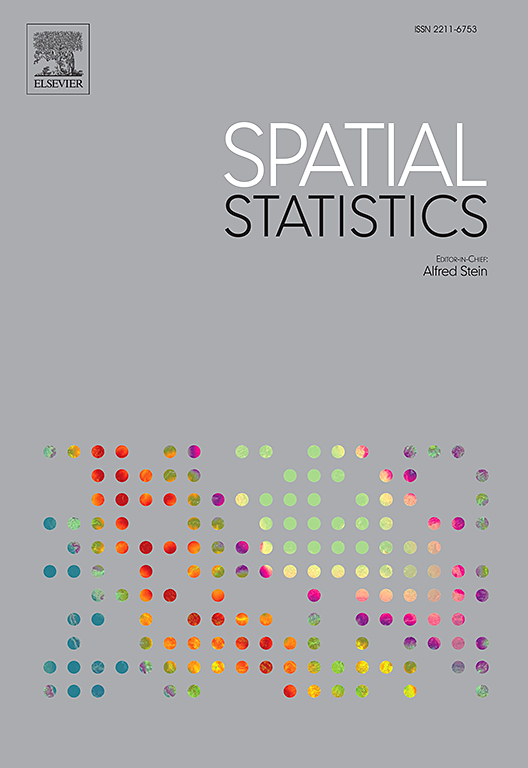2020年美国总统大选民意调查中的政权更迭和空间依赖
IF 2.5
2区 数学
Q3 GEOSCIENCES, MULTIDISCIPLINARY
引用次数: 0
摘要
本文提出了一种新的两阶段建模框架,将马尔可夫切换(MS)模型与空间效应增强的自回归模型相结合,分析了拜登2020年大选期间民调百分比的动态和空间相互依赖性。在第一阶段,我们使用MS模型将每个州的日常投票时间序列划分为不同的制度-解释为下降,稳定和增长的阶段。这种划分捕捉到了公众舆论的突然变化和当地趋势,使我们能够将政权更迭与关键政治事件(如辩论、政党大会和里程碑式的竞选成就)联系起来。否则,轮询数据固有的非线性就会因第一次差分而丧失。通过去除特定于政权的成分,我们使用带有外生变量(ARX)的自回归模型生成平稳残差,该模型通过两种互补效应整合了政治空间相互作用。溢出效应反映的是政治上有影响力的国家产生的滞后影响,而传染效应反映的是邻国同时产生的影响。采用一种基于部分相关性的递归算法,为每个状态选择最相关的溢出源。基于13个摇摆州的日常数据,实证结果揭示了持久的政权结构和显著的空间依赖性的有力证据。虽然传染效应在各州都同样显著,但溢出动态在大小和方向上都表现出相当大的异质性。这种综合建模方法增强了我们对民意调查趋势的复杂、非线性时间演变的理解,以及支撑2020年选举结果的政治观点的空间扩散。本文章由计算机程序翻译,如有差异,请以英文原文为准。
Regime changes and spatial dependence in the 2020 US presidential election polls
This paper introduces a novel two-stage modeling framework that combines Markov Switching (MS) models with an autoregressive model augmented by spatial effects to analyze the dynamics and spatial interdependence of Biden’s polling percentages during the 2020 electoral campaign. In the first stage, we employ MS models to segment each state’s daily polling time series into distinct regimes — interpreted as phases of decline, stability, and growth. This segmentation captures abrupt changes and local trends in public opinion, enabling us to link regime shifts with key political events such as debates, party conventions, and milestone campaign achievements. The inherent nonlinearity of polling data would otherwise be lost by first differencing. By removing the regime-specific components, we generate stationary residuals modeled using an Autoregressive model with exogenous variables (ARX) that incorporates political spatial interactions through two complementary effects. The spillover effect captures lagged influences arising from politically influential states, while the contagion effect reflects the contemporaneous impact of neighboring states. A recursive algorithm based on partial correlations is implemented to select the most relevant spillover sources for each state. Empirical results, based on daily data from 13 swing states, reveal robust evidence of persistent regime structures and marked spatial dependencies. While contagion effects are uniformly significant across states, spillover dynamics exhibit considerable heterogeneity in both magnitude and direction. This integrated modeling approach enhances our understanding of the complex, nonlinear temporal evolution of polling trends and the spatial diffusion of political opinions that underpinned the 2020 electoral outcome.
求助全文
通过发布文献求助,成功后即可免费获取论文全文。
去求助
来源期刊

Spatial Statistics
GEOSCIENCES, MULTIDISCIPLINARY-MATHEMATICS, INTERDISCIPLINARY APPLICATIONS
CiteScore
4.00
自引率
21.70%
发文量
89
审稿时长
55 days
期刊介绍:
Spatial Statistics publishes articles on the theory and application of spatial and spatio-temporal statistics. It favours manuscripts that present theory generated by new applications, or in which new theory is applied to an important practical case. A purely theoretical study will only rarely be accepted. Pure case studies without methodological development are not acceptable for publication.
Spatial statistics concerns the quantitative analysis of spatial and spatio-temporal data, including their statistical dependencies, accuracy and uncertainties. Methodology for spatial statistics is typically found in probability theory, stochastic modelling and mathematical statistics as well as in information science. Spatial statistics is used in mapping, assessing spatial data quality, sampling design optimisation, modelling of dependence structures, and drawing of valid inference from a limited set of spatio-temporal data.
 求助内容:
求助内容: 应助结果提醒方式:
应助结果提醒方式:


